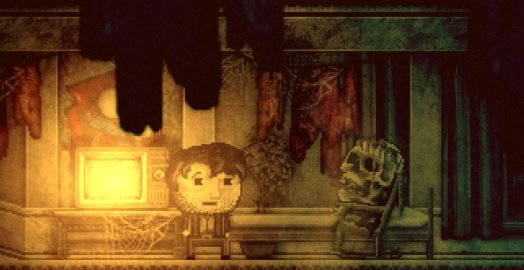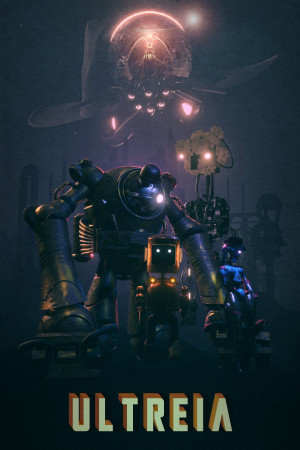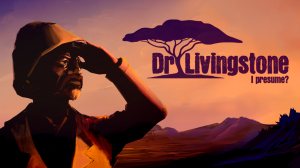Review for Distraint 2

“When you hit rock bottom, the only way to go is up” is a sentiment so bereft of meaning that it’s stamped on bumper stickers; the hardships on the path to recovery are a bit wordy for that tight space. That’s not the case with Finnish developer Jesse Makkonen’s psychological horror title Distraint 2. The sequel to 2015’s Distraint never shies away from tackling its difficult subject matter. While its puzzles aren’t at all challenging, it takes on the colossal task of exploring the darker nooks and crannies of the human mind in a mere four hours – with varying degrees of success.
The game wastes no time reintroducing us to Makkonen’s familiar hand-drawn, side-scrolling, letterboxed style with a silent-film-inspired recap of events. Distraint 2 directly follows on from its predecessor, so for those who experienced the original’s unsettlingly finite ending, this will come as quite the surprise. Newcomers could start here but should really squeeze in a playthrough of the first game, as some of the more bizarre moments are sure to lack the same resonance without a solid foundation. The fascination with elephants, for example, is sure to confuse the uninitiated.
Before the nightmarish pachyderms arrive on the scene, you'll become (re)acquainted with the protagonist, Price, formerly an ambitious young lawyer at the ghoulishly greedy firm of McDade, Bruton & Moore. Last time out its partners had charged him with evicting three down-on-their-luck tenants, including the aptly named Mrs Goodwin. But the guilt of forcing the elderly lady from her home soon started gnawing at his conscience, and as the anguish built, his mental world came crumbling down around him in ever more horrifying ways. This time around Price is in no better state, waking up alone and bedraggled on a park bench with no idea where he is. Where, though, isn’t all that important; Distraint 2 prefers not to be constricted by silly concepts like time and space.
After dawdling around the park – easily navigable with the WASD keys – you’ll encounter Reason. And yes, that’s reason with a capital R. This personification of Price’s psyche is just one of the few you’ll meet. Some will dispense nuggets of wisdom, while others will serve as warnings; it's like a more harrowing version of A Christmas Carol. These apparitions, along with the protagonist’s parents (childhood trauma is central to the plot) and the shady card shark George Blackwell – whose greedy attitude echoes Price’s past behaviour – are the most noteworthy of a modest cast, who communicate as in the first game via scrolling text accompanied by electronic bleeps and bloops.
Reason gets the plot ball rolling by setting our downtrodden man on a metaphysical journey to rediscover himself and the embodiment of Hope. Quite the inversion from the original, where you were working through a series of ever more self-destructive, isolating choices; the sequel is far more optimistic in its storytelling. Over its five short chapters, Price revisits both new and familiar spaces from the last game. You'll once again wander confounding hallways in Mrs Goodwin’s building, brave the nursing home’s dank halls, and poke around fireplaces. These nods to the previous instalment are nostalgic and fitting for a plot centring around confronting the past, but some might accuse it of creative recycling.
Despite the similarities, it’s clear the series has matured quite a bit in this second outing. Absent are the time-sensitive tasks, as well as the over-reliance on viscera and gore. The sequel aims to unsettle using atmospheric touches and unreliable spaces: the world has a hyper-stylised, dream-like and unfocused quality reminiscent of the rear projections once used in films. Homey apartments, murky hotels and lazy rivers, tinted in chromatic shades, warp and morph as you pass through. The colour palette and tones can drastically switch on a dime; the world feels alive and reactive.
Makkonen does his best work when he digs down into his story’s frightful roots. Nowhere is this more evident than when the very embodiment of Fear starts to hunt Price. These moments get the heart pumping as the world melts to greyscale and the music climbs from soft, slightly discordant murmurs to a deafening cacophony with each step the creature takes. There are no cheap jump scares here, just meticulously crafted terror. It’s well worth plugging in your headphones to experience the full disconcerting effect.
Price isn't a valiant hero – there won’t be any fisticuffs or clever trap-building – so until the true nature of this beast is revealed, you’ll need to hole up in strategically placed closets when it occasionally slithers by. Distraint 2 does not allow you to just record your progress anywhere, and makes a point of informing you that autosaving isn’t an option, either. But don’t fear, as convenient save points are clearly marked and scattered all around, while moments of danger are well telegraphed and the chances of perishing are slim. This is a significant change in a series that previously had you rushing from point A to point to B in a particularly tricky section.
Staggering shadows aren’t the only things haunting Price: far more traumatic memories are buried in his subconscious. These flashback sequences deal with his childhood and are soaked in appropriate sullen blues. While brief, they carry some real emotional weight, and an unexpected final reveal isn’t so much shocking as it is heartbreaking. To balance out the melancholy, there are pink- and yellow-dyed interludes where you’ll fix a fence, meet a lady, do a spot of fishing and share a beer with an old buddy at a festival. These might seem the total antithesis of the general scary vibe, but it’s nice to just take a break and relax for a bit. Without these nuggets of normality, it would be far more difficult to appreciate why this quest Price is on is so important. Maybe this is all that hopeful guff Reason keeps nattering on about?
When the game doesn’t focus on the central character drama and philosophical ideas, it’s not as effective. An early chapter – where you’re tasked with uncovering why the wealthy scoundrel Blackwell has such suspiciously good luck at poker – might be a nod to Price’s turning over a new leaf and helping out the little guy, but it’s a stretch to see it as a major revelation on his road trip to redemption. It feels like a loose thread in a narrative that’s otherwise so focused on him and his issues. It’s also disheartening that in this morality tale about how important choices are, you’re never allowed a more active role. This essentially on-rails structure is common in games with didactic stories, but it feels at odds with the theme here.
Another stumbling block is its challenge, or the lack thereof. Those who love complex mind-benders should look for distractions elsewhere – the focus here is fully on the story. A particular low point is having to ask George Blackwell to solve a puzzle for you. (Wait, isn’t that the player’s job?) Rudimentary slider and image-manipulation make up the bulk of the problems you’ll encounter. And when you do find yourself in need of an item it’s never far away, so with only three inventory slots it’s pretty obvious what goes where. Need a light bulb? Well, there’s only one in the area.
Admittedly, that one light bulb is central to an interesting quandary born of the game’s continuous gloom. After acquiring it, its modest source of light will reveal areas of interest so you’ll be on the lookout for empty electrical sockets. This not only adds a welcome twist to exploration but meshes perfectly with the game’s overall theme of exposing what’s hidden beneath. It’s made even more effective by Makkonen’s choice to usually only light the environment with actual physical sources. Unfortunately, there are times when this minimalist mood lighting works against Distraint 2. One particular hotspot blends into the background and flashes so briefly as you wander by that if you miss it, you could be stuck retreading corridors wondering how to continue onwards.
With its idiosyncratic nature, one would expect Distraint 2’s conundrums to be equally ingenious. Psychological horror classics like <i>Sanitarium</i> fold their leads’ differing mental states into the very fabric of their bizarre worlds. But here the problems you come across seem to be merely functional route markers and not part of the actual journey.
Distraint 2 demonstrates that while redemption may be possible, there are no fast lanes to reach it. The journey here is not a pleasant one emotionally, and its puzzles can be far too simple and generic, and yet Distraint 2’s intricately strange nature and otherworldly locales soaked in bold colours and underscored by onslaughts of dissonant sound make it worth the effort. You’ll just never see that pasted on a bumper sticker.
WHERE CAN I DOWNLOAD Distraint 2
Distraint 2 is available at:
- GOG -85%
- HumbleBundle












__medium.jpg)
















